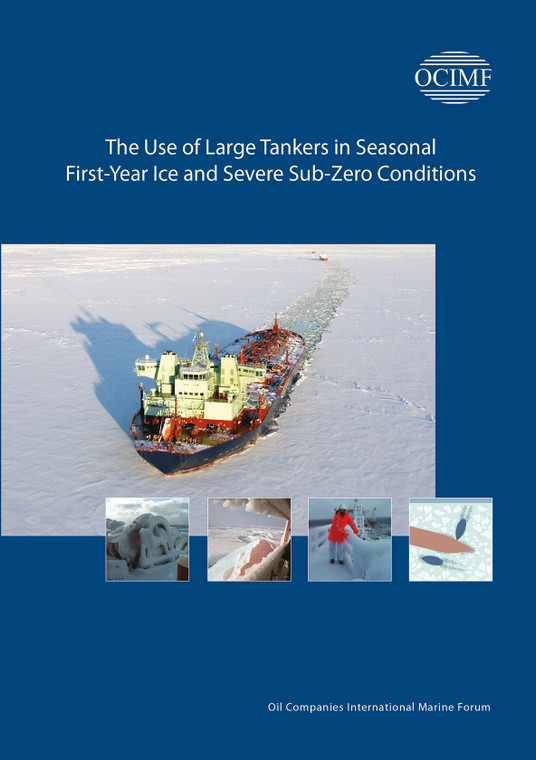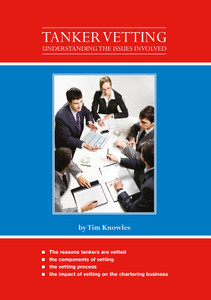
This publication provides guidance to chartering and vetting groups on the safe operation of tankers in areas affected by seasonal first-year ice. It is primarily aimed at the use of low, or no, ice class tankers, from 50,000 tonnes deadweight upwards, likely to encounter first-year ice.
This publication looks at the preparations and safeguards that should be implemented by ships undertaking passages in ice and identifies the issues that should be considered for risk prevention or mitigation. It also discusses chartering and lists the questions to be asked when chartering a ship for operations involving low temperatures.
Practical guidance is provided on ship winterisation, covering cargo and ballast systems, deck preparation, engine rooms, machinery and systems, safety and life-saving equipment and fire-fighting systems and equipment.
The book discusses the difficulties of navigating large tankers in ice and outlines the assistance that can be provided by tugs and icebreakers. It also describes how best to avoid the formation and impact of ship icing.
Guidance is also provided on oil spill response in ice and crew training.
Purpose and Scope
Independent ice navigation and the icebreaker-escorted navigation of large tankers are concepts that may be relatively new to many tanker owners and charterers. With the changes that have occurred in the Russian Federation, the tanker market has experienced an increase in the export of crude oil by large tankers from Baltic terminals impacted by the potential for winter ice navigation. This trend has continued elsewhere in the world as crude export terminals have been established or are planned in other ice navigation areas, such as the Barents Sea, White Sea and in proximity to Sakhalin Island (Eastern Russian Federation).
Some sectors of the industry have been used to dealing with the more traditional high ice class, smaller tankers designed specifically for escorted or unescorted ice transit. What is relatively new to the industry is the increase in demand for larger-sized crude tankers of low, or no, ice class to trade out of an increasing number of ports subjected to first-year ice formation.
The purpose of this publication is to provide guidance to chartering and vetting groups on the safe operation of tankers in areas affected by seasonal first-year ice.
Areas commonly affected by first-year ice include the Baltic Sea, White Sea, Barents Sea, the Eastern coast of Canada, Cook Inlet and in the proximity of Sakhalin Island in the Eastern Russian Federation.
The guidance is primarily aimed at the use of low, or no, ice class tankers, from 50,000 tonnes deadweight upwards, likely to encounter first-year ice. The document does not address established or specialised ice trades utilising high ice class tonnage.
It is recommended that charterers limit the use of low, or no, ice class ships in ice covered areas and non-winterised ships during severe sub-zero temperature conditions. For the purpose of this document, ‘severe sub-zero’ conditions are defined as forecasted daily mean ambient temperatures below -15°C.
Chartering groups will be aware of the different types of ice clauses in common use in charter parties. This document does not address the validity or otherwise of specific clauses and it is recommended that commercial or legal advisers are contacted for advice on such issues.
General guidance on the various national and regional ice navigation control services is contained in Appendix C.
Section 1 – Ice Navigation Risk Assessment
Section 2 – Vetting for Ice Navigation
Section 3 – Commentary on Ice Class Notations
Section 4 – Engine Power
Section 5 – The Winterisation of Ships
5.1 Cargo and Ballast Systems
5.2 Deck
5.3 Engine Rooms, Machinery and Systems
5.4 Safety and Life-Saving Equipment
5.5 Fire-Fighting Systems and Equipment
5.6 Pollution Prevention and Response
5.7 Ice Accretion and Snow Accumulation on Ships
Section 6 – Navigation of Large Tankers in Ice
6.1 Icebreaker Escort of Large Tankers
6.2 Tug Support in Ice
6.3 Operations at Offshore Terminals
Section 7 – Oil Spill Response in Ice
Section 8 – Proficiency of Ship’s Crew
Appendices
A – Some Useful Contact Websites
B – Some Issues to be Considered when Conducting a Hazard Risk Assessment of Operations in Ice
C – Ice Navigation Control Services
The Oil Companies International Marine Forum (OCIMF) is a voluntary association of oil companies with an interest in the shipment and terminalling of crude oil, oil products, petrochemicals and gas. OCIMF focuses exclusively on preventing harm to people and the environment by promoting best practice in the design, construction and operation of tankers, barges and offshore vessels and their interfaces with terminals. Learn more at:
- Number of Pages:
- 72
- ISBN:
- 9781856094290
- Published Date:
- November 2010
- Binding Format:
- Hardback
- Book Height:
- 300 mm
- Book Width:
- 210 mm
- Weight:
- 0.7 kg
- Author:
Oil Companies International Marine Forum
- Preview:
- Yes





